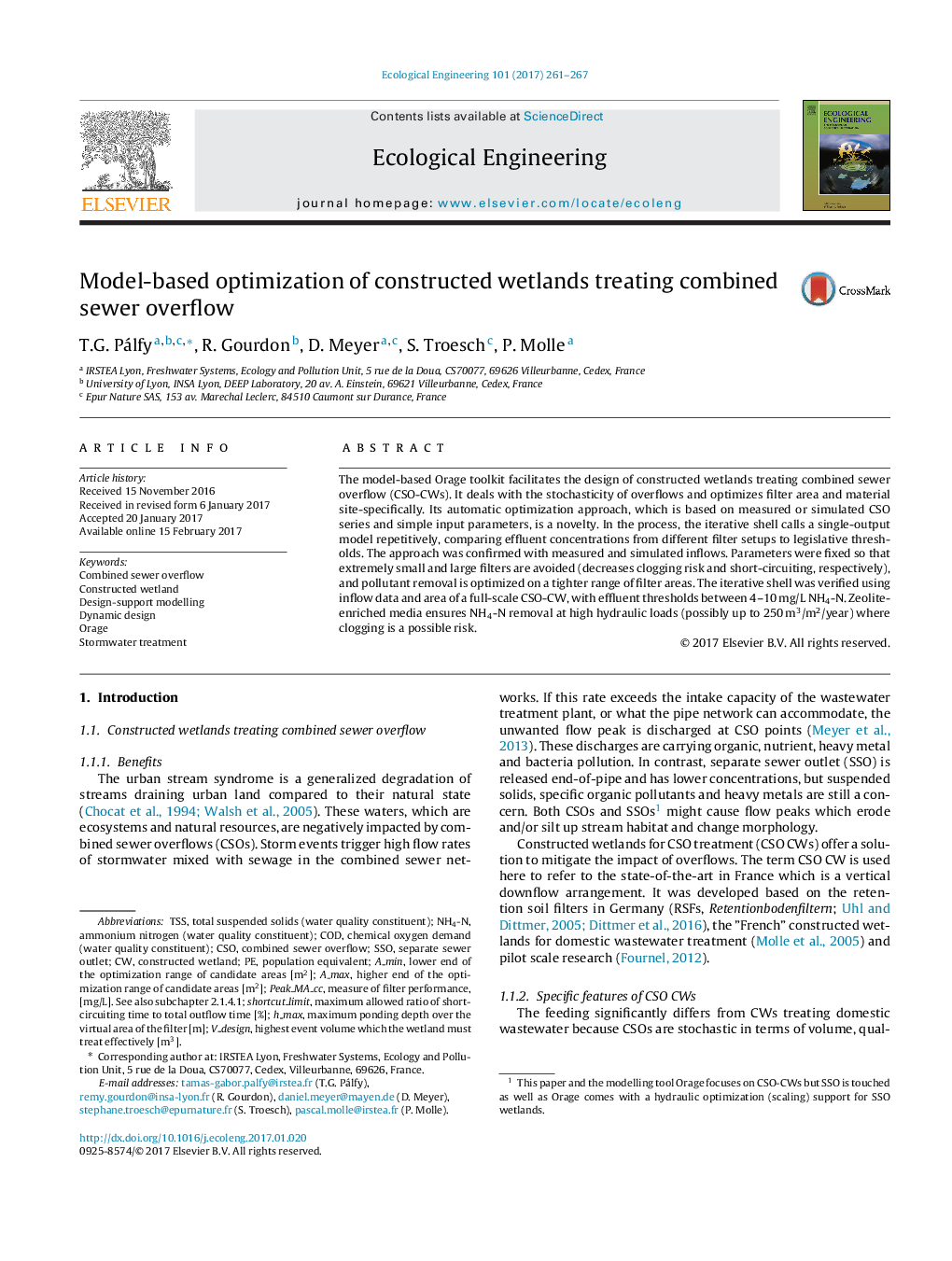| کد مقاله | کد نشریه | سال انتشار | مقاله انگلیسی | نسخه تمام متن |
|---|---|---|---|---|
| 5743937 | 1617998 | 2017 | 7 صفحه PDF | دانلود رایگان |
- We developed an optimization tool of wetlands treating combined sewer overflow.
- We demonstrate its automatic optimization feature called the iterative shell.
- Key parameters of the optimization process are fixed in a simulation experiment.
- The iterative shell is confirmed and predictions are realistic.
- NH4-N removal can be effective even at small filters where clogging might be a risk.
The model-based Orage toolkit facilitates the design of constructed wetlands treating combined sewer overflow (CSO-CWs). It deals with the stochasticity of overflows and optimizes filter area and material site-specifically. Its automatic optimization approach, which is based on measured or simulated CSO series and simple input parameters, is a novelty. In the process, the iterative shell calls a single-output model repetitively, comparing effluent concentrations from different filter setups to legislative thresholds. The approach was confirmed with measured and simulated inflows. Parameters were fixed so that extremely small and large filters are avoided (decreases clogging risk and short-circuiting, respectively), and pollutant removal is optimized on a tighter range of filter areas. The iterative shell was verified using inflow data and area of a full-scale CSO-CW, with effluent thresholds between 4-10Â mg/L NH4-N. Zeolite-enriched media ensures NH4-N removal at high hydraulic loads (possibly up to 250Â m3/m2/year) where clogging is a possible risk.
Journal: Ecological Engineering - Volume 101, April 2017, Pages 261-267
